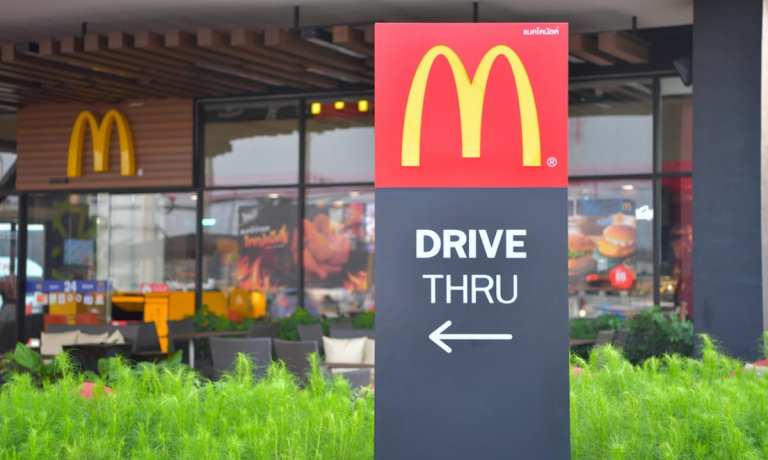
The automated drive-thru competition is heating up. McDonald’s recently revealed that it is trying out automated order-taking technologies at 10 drive-thru restaurants in Chicago. Customers will dictate their orders to the drive-thru’s computer, which will interpret the voice order via artificial intelligence (AI). The technology is currently able to process orders with about 85 percent accuracy and can handle about four out of five orders.
Across the industry, quick-service restaurant (QSR) chains are looking for ways to win consumers’ drive-thru loyalty by offering the most seamless and efficient experience. For instance, Burger King is piloting a program that uses Bluetooth to identify Royal Perks loyalty program members, displaying their previous orders on menu boards as they drive by. Meanwhile, Boston-based AI company OpenCity recently told WHDH that its drive-thru voice-ordering virtual assistant, Tori, can process orders with 99 percent accuracy.
“It’s a really difficult audio environment — you may have birds chirping, you may have kids in the car, you may have loud cars, a lot of different things going on,” the company’s CEO Nick Belsito told the publication. “And that’s kind of the magic of what we do — it just works, and it works every time.”
Restaurants ranging from Wendy’s to Panera Bread to Pizza Hut to Chipotle, among others, have announced new restaurants and restaurant redesigns in recent months that emphasize the importance of the drive-thru channel. As Taco Bell President and Global Chief Operating Officer Mike Grams told PYMNTS in an interview in April, “Right now, everyone in our industry is talking about the drive-thru as the cornerstone of the ‘restaurant of the future.’”
By upgrading drive-thrus with digital technologies, restaurants can capture consumers’ demand for this convenient channel. A recent survey from Bluedot, a company that provides geofencing technology for the apps of leading restaurant brands, among other companies, found that visits to drive-thrus are up 36 percent from the “early days of the pandemic,” and that about 90 percent of consumers have visited at least one drive-thru in the last month.
However, this drive-thru patronage is conditional. The survey found that 68 percent of consumers will revisit a drive-thru if the restaurant fulfills the order accurately and that 62 percent will return if the experience is quick. However, across order collection channels, 85 percent of consumers will consider leaving if the line is too long, and consumers’ expectations of drive-thru wait times have gotten shorter since August 2020 — under six minutes, down from 10.
In fact, in years to come, you may even be able to place your order through your car’s voice assistant to pick up at the nearest drive-thru. As Andrew Robbins, co-founder and chief executive officer at restaurant Software-as-a-Service (SaaS) company Paytronix, told Karen Webster in a May interview, many restaurants are already looking to develop these features. He expects that in-car AI will be able to, based on time of day and previous orders, prompt consumers to, say, get their morning cup of coffee. He also predicted that the interface will be able to “order you the large iced coffee, and route and navigate you to the nearest Dunkin.”
Voice ordering may be essential to offering the quickest, most frictionless experience. Data from the PYMNTS/Visa How We Will Pay survey of almost 10,000 consumers conducted in August of 2020 showed that the share of consumers making purchases via voice assistant is up 42 percent since 2018 and up 10 percent since 2019. Nine percent had made voice-assisted purchases while shopping for groceries or retail goods in the 24 hours before taking the survey.